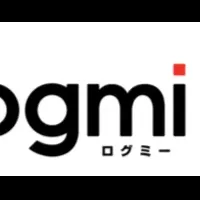
Projecting a Surge in the Water and Wastewater Treatment Market by 2034
Projecting a Surge in the Water and Wastewater Treatment Market by 2034
The water and wastewater treatment industry is on track for remarkable growth, with forecasts indicating that it will balloon to approximately $651.6 billion by the year 2034. This represents a compound annual growth rate (CAGR) of 6.1% spanning from 2025 to 2034. A recent report by Meticulous Research® highlights several pivotal factors driving this substantial market expansion, including factors like increasing water scarcity, rapid urbanization, and heightened environmental regulations. Furthermore, the continuous emergence of innovative treatment technologies is playing a crucial role in the industry’s growth.
Key Market Drivers and Trends
Increasing Global Water Scarcity
The escalating concern about global water scarcity is prompting investments in advanced water and wastewater management solutions. Urban growth is leading to a rise in demand for efficient water systems, further accelerating market growth.
Technological Advancements
The market's evolution is characterized by the adoption of smart water management systems, which leverage Internet of Things (IoT) and artificial intelligence (AI) technologies to enhance operational efficiency and reduce costs. These technologies enable utilities and municipalities to optimize their operations and manage resources more effectively.
Wastewater Recycling Initiatives
Particularly in water-scarce regions, the momentum for wastewater recycling is increasing. This practice not only conserves freshwater but also meets growing demands in various sectors, including agriculture and industry. Sustainable practices such as low-energy technologies and eco-friendly infrastructures are becoming focal points in treatment strategies, driven by a growing public awareness regarding environmental protection.
Regulatory Landscape
Stricter environmental legislation is amplifying the focus on innovative treatment options. As public awareness regarding water conservation rises, industries are being encouraged to invest in sustainable solutions to comply with these regulations.
Growth Opportunities
The surge in urbanization, industrialization, and environmental awareness has led to numerous opportunities within the water and wastewater treatment market. Municipalities and industries are now investing in cutting-edge treatment technologies to secure a steady supply of potable water and efficiently manage wastewater.
Innovative Treatment Technologies
Technologies such as membrane filtration, UV disinfection, and advanced oxidation processes are emerging as popular solutions. These techniques effectively remove contaminants and produce high-quality treated water, driving the market forward.
Smart Water Management Systems
The integration of IoT, AI, and data analytics into water management systems is revolutionizing the operations of treatment plants. This digital transformation leads to energy savings and improved efficiencies—factors that are attractive to stakeholders looking to enhance their operational capabilities.
Increased Investment in Wastewater Management
As the demand for clean water grows, investments aimed at wastewater recycling are on the rise. This trend is notably prevalent in regions facing acute water shortages, such as the Middle East and parts of the Asia-Pacific.
Market Challenges
Despite the promising outlook, the water and wastewater treatment sector faces challenges that could hinder its growth trajectory. The high costs associated with advanced treatment technologies pose a significant barrier, particularly for smaller municipalities and developing countries. These innovations can require substantial initial investment and ongoing operational expenses.
Moreover, aging infrastructure in developed nations requires massive upgrades, which can be both costly and prone to delays. Regulatory complexities also add challenges, as businesses must navigate varying standards across different regions, which can lead to project holdups.
Segment Insights
Analysis suggests that the wastewater treatment segment will contribute significantly, comprising around 63% of the overall market share by 2025. Factors such as growing focus on public health, stringent regulations, and the push for sustainable solutions are propelling this segment's growth.
On the offering side, operation and maintenance services are projected to capture the largest segment share, driven by the need for consistent quality in treated water production and the complexities of modern treatment facilities. The municipal applications segment is expected to dominate, reflecting the increased pressures on municipalities to deliver safe drinking water as urban populations expand.
Geographic Market Insights
Regionally, the Asia-Pacific area is poised to lead the global market, benefiting from increased investment in water infrastructure and advancements in treatment technologies. Countries such as China and India are particularly active in this sector, given their growing populations and the pressing need for sustainable water management solutions. These dynamics contribute to a positive forecast for the market's growth within this region.
Competitive Landscape
Within this competitive landscape, industry players are employing various strategies to expand their presence. Key methods include product launches, mergers and acquisitions, and strategic partnerships. Major companies such as SUEZ, Veolia, and Xylem are prominently involved in these initiatives, which aim not only to broaden their product offerings but also to capture greater market share.
In conclusion, the water and wastewater treatment market is set for significant growth, shaped by a myriad of factors that include technological advancements, urbanization, and evolving environmental regulations. Despite some challenges, the opportunities inherent within this sector are vast and growing, making it a focal point for future infrastructure investments.
Topics Business Technology)










【About Using Articles】
You can freely use the title and article content by linking to the page where the article is posted.
※ Images cannot be used.
【About Links】
Links are free to use.